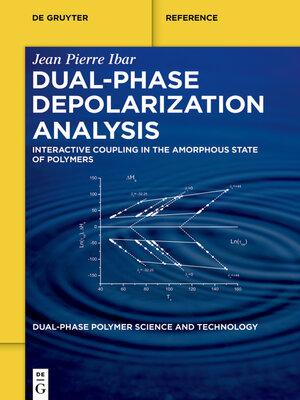Dual-Phase Depolarization Analysis
ebook ∣ Interactive Coupling in the Amorphous State of Polymers · De Gruyter Reference
By Jean Pierre Ibar

Sign up to save your library
With an OverDrive account, you can save your favorite libraries for at-a-glance information about availability. Find out more about OverDrive accounts.
Find this title in Libby, the library reading app by OverDrive.



Search for a digital library with this title
Title found at these libraries:
| Library Name | Distance |
|---|---|
| Loading... |
This book focuses on the characterization of the amorphous phase of polymers, whether they are pure amorphous or semi-crystalline ones, above Tg or below Tg, by studying the relaxation of dipoles and space charges naturally found in their structure after they have been activated by the application of a voltage field. The experimental deconvolution of the relaxation modes responsible for internal motion in the amorphous phase is coupled with a mathematical procedure (Thermal-Windowing Deconvolution-TWD) that leads to the understanding of their coupling characteristics which, it is shown, relate to the state of the material itself, for instance its non-equilibrium state or its internal stress for matter belonging to interfaces between aggregated or dispersed phases.







